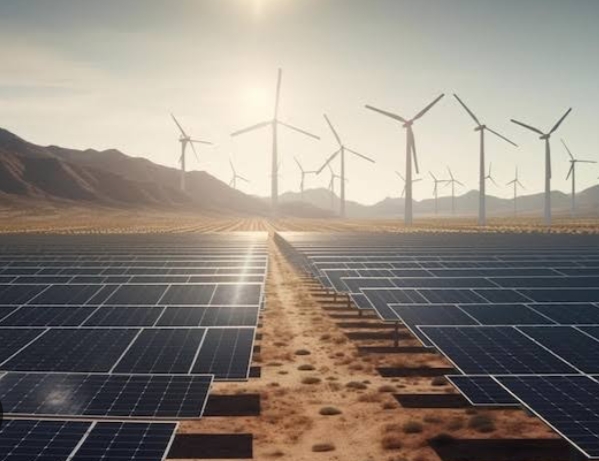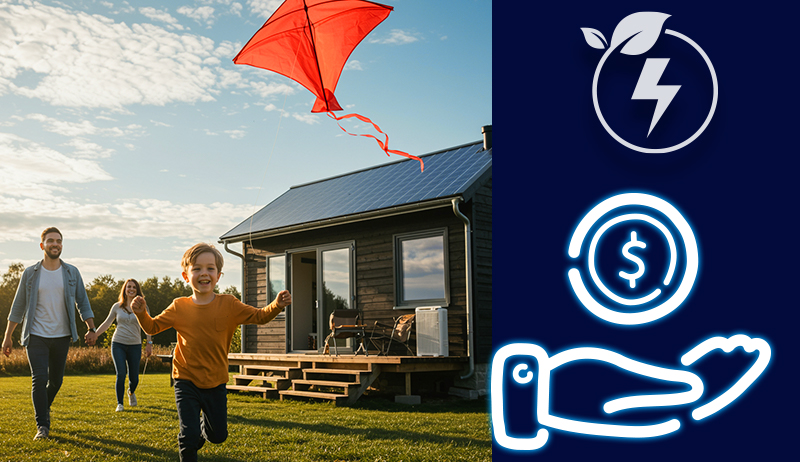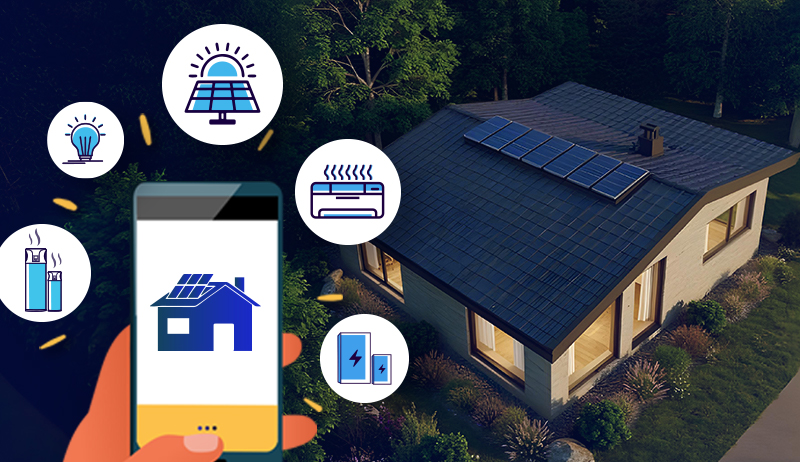Green Energy Dawns on Africa: A Continent Poised for Sustainable Power
Africa, a land of immense potential, has long grappled with the challenge of energy access and security.
Yet, amidst the complexities lies a burgeoning opportunity: the transition to green energy. This shift promises not only to illuminate lives but also to empower communities, drive economic growth, and combat climate change.
A Continent Blessed with Renewables:
Africa boasts a wealth of renewable energy resources, dwarfing its current energy consumption. Here’s a glimpse:
- Solar Power: The continent receives an average of 3000 sunshine hours annually, with the Sahara Desert holding the world’s highest solar potential. The International Renewable Energy Agency (IRENA) estimates Africa’s solar capacity at 11 TW, enough to meet global electricity demand several times over.
- Wind Power: From the blustery coastlines of South Africa to the Horn of Africa’s high plateaus, Africa’s wind potential is significant. IRENA estimates a technical potential of 10 TW, with onshore resources exceeding 5 TW.
- Hydropower: With mighty rivers like the Nile, Congo, and Zambezi, Africa’s hydropower potential is substantial. Currently, it contributes around 60% of the continent’s renewable energy generation, with an installed capacity of over 30 GW.
- Geothermal Power: The Great Rift Valley, stretching from Ethiopia to Mozambique, harbors immense geothermal potential. Kenya is a leading example, with an installed capacity of 883 MW, and several other countries are exploring this clean and reliable source.
Progress and Challenges:
Despite vast potential, Africa’s green energy journey faces hurdles. Here’s a snapshot:
- Investment Gap: The continent requires significant investments in renewable energy infrastructure, estimated at $130 billion annually by 2030. While investments are increasing, the gap remains substantial.
- Grid Infrastructure: Many African countries lack robust grids, hindering the integration of large-scale renewable energy projects. Strengthening and expanding transmission lines is crucial.
- Policy and Regulation: Enabling policies and regulations are essential to attract investments, incentivize renewable energy development, and ensure fair competition.
- Capacity Building: Local expertise in technology, project management, and financing needs to be strengthened for sustainable development and maintenance of green energy projects.
Statistics Speak Volumes:
- Renewable Energy Share: Despite challenges, Africa has seen a remarkable rise in renewable energy. As of 2022, renewables account for 21% of the continent’s installed power generation capacity, compared to just 7% in 2010.
- Solar Power Boom: Solar photovoltaic (PV) is the fastest-growing renewable energy source in Africa. The continent’s installed solar PV capacity reached 18.8 GW in 2022, a tenfold increase in a decade.
- Leading the Way: South Africa, Kenya, Ethiopia, Morocco, and Egypt are leading the charge in renewable energy development, accounting for over 70% of the continent’s installed renewable capacity.
The Ripple Effect:
The transition to green energy in Africa holds immense potential beyond just electricity generation. Here’s how:
- Economic Growth: Renewable energy projects create jobs, boost local economies, and attract investments, fostering sustainable development.
- Climate Action: By reducing reliance on fossil fuels, Africa can contribute significantly to global climate change mitigation efforts.
- Energy Security: Green energy sources are less susceptible to price fluctuations and geopolitical disruptions, enhancing energy security for African nations.
- Improved Health: Transitioning away from fossil fuels leads to cleaner air, reducing respiratory illnesses and improving public health.
Green Energy Potential in Africa: A Statistical Snapshot
| Resource | Potential | Current Installed Capacity (2022) |
|---|---|---|
| Solar Power | 11 TW | 18.8 GW |
| Wind Power | 10 TW (Onshore: 5+ TW) | 6.1 GW |
| Hydropower | 300 GW | 34.1 GW |
| Geothermal Power | 15 GW | 0.88 GW (Kenya) |
Renewable Energy Share:
| Year | Share of Installed Power Generation Capacity |
|---|---|
| 2010 | 7% |
| 2022 | 21% |
Leading Countries in Renewable Energy Development:
| Country | Installed Renewable Capacity (2022) | Share of Africa’s Total Renewable Capacity |
|---|---|---|
| South Africa | 13.4 GW | 39% |
| Kenya | 3.2 GW | 9% |
| Ethiopia | 2.9 GW | 8% |
| Morocco | 2.1 GW | 6% |
| Egypt | 1.8 GW | 5% |
Additional Notes:
- The table presents estimated potential and installed capacity in gigawatts (GW).
- Hydropower currently makes up the largest share of renewable energy generation in Africa, but solar PV is growing rapidly.
- The leading countries listed represent over 70% of Africa’s total installed renewable capacity.
A Brighter Future Beckons:
Africa’s green energy transition is not just a possibility but a necessity. With its abundant resources, increasing investments, and growing commitment, the continent is poised to unlock the potential of renewables. This shift holds the key to a brighter future – one powered by clean, sustainable energy that illuminates lives, empowers communities, and paves the way for a more prosperous and resilient Africa.bv
https://www.exaputra.com/2024/02/green-energy-dawns-on-africa-continent.html
Renewable Energy
Threats to America’s Health and Safety
 Those who are involved in science are concerned that American society is threated by misinformation.
Those who are involved in science are concerned that American society is threated by misinformation.
Of course, MAGA crowd, the antivaxxers, the climate deniers, etc. believe the opposite, i.e., the people like Anthony Fauci, who have dedicated their entire adult lives to human health, have suddenly become corrupt, and are profiting from fake science while destroying the U.S. economy.
Renewable Energy
ACORE Statement on the Department of Interior’s Action to Halt Fully Permitted Offshore Wind Construction Projects
ACORE Statement on the Department of Interior’s Action to Halt Fully Permitted Offshore Wind Construction Projects
WASHINGTON, D.C. — The American Council on Renewable Energy (ACORE) issued the following statement from ACORE President and CEO Ray Long in response to the Department of the Interior’s action to halt fully permitted offshore wind construction projects:
“Americans expect their government and private sector to work together to ensure that the lights stay on and their electric bills are affordable. The five East Coast offshore wind projects that have been paused should be a total success story: $28 billion in committed private sector capital, expanded port infrastructure, support for domestic shipbuilding, and 10,000 good-paying local jobs—all to support a more robust, affordable, reliable, and secure electricity resource base for decades to come. Given skyrocketing electricity demand forecasts and consumers’ clear concerns about affordability, projects like these need to get over the finish line to give people confidence that government and the private sector can still deliver on big things. Unfortunately, actions like this send the opposite message at exactly the wrong time.”
###
ABOUT ACORE
For over 20 years, the American Council on Renewable Energy (ACORE) has been the nation’s leading voice on the issues most essential to clean energy expansion. ACORE unites finance, policy, and technology to accelerate the transition to a clean energy economy.
For more information, please visit http://www.acore.org.
Media Contacts:
Stephanie Genco
Senior Vice President, Communications
American Council on Renewable Energy
communications@acore.org
The post ACORE Statement on the Department of Interior’s Action to Halt Fully Permitted Offshore Wind Construction Projects appeared first on ACORE.
https://acore.org/news/acore-statement-on-the-department-of-interiors-action-to-halt-fully-permitted-offshore-wind-construction-projects/
Renewable Energy
Why Choose Cyanergy? Your Energy Efficiency Expert for a Decade
-
Greenhouse Gases5 months ago
Guest post: Why China is still building new coal – and when it might stop
-
Climate Change5 months ago
Guest post: Why China is still building new coal – and when it might stop
-
Climate Change2 years ago
Spanish-language misinformation on renewable energy spreads online, report shows
-

 Greenhouse Gases2 years ago
Greenhouse Gases2 years ago嘉宾来稿:满足中国增长的用电需求 光伏加储能“比新建煤电更实惠”
-
Climate Change Videos2 years ago
The toxic gas flares fuelling Nigeria’s climate change – BBC News
-

 Climate Change2 years ago
Climate Change2 years ago嘉宾来稿:满足中国增长的用电需求 光伏加储能“比新建煤电更实惠”
-

 Carbon Footprint2 years ago
Carbon Footprint2 years agoUS SEC’s Climate Disclosure Rules Spur Renewed Interest in Carbon Credits
-
Renewable Energy6 months ago
US Grid Strain, Possible Allete Sale











 Delivered government-approved energy-efficiency upgrades across Australia
Delivered government-approved energy-efficiency upgrades across Australia



